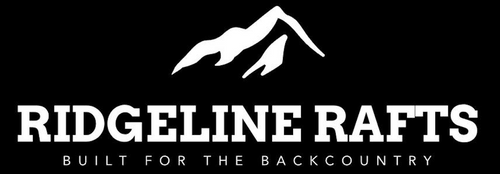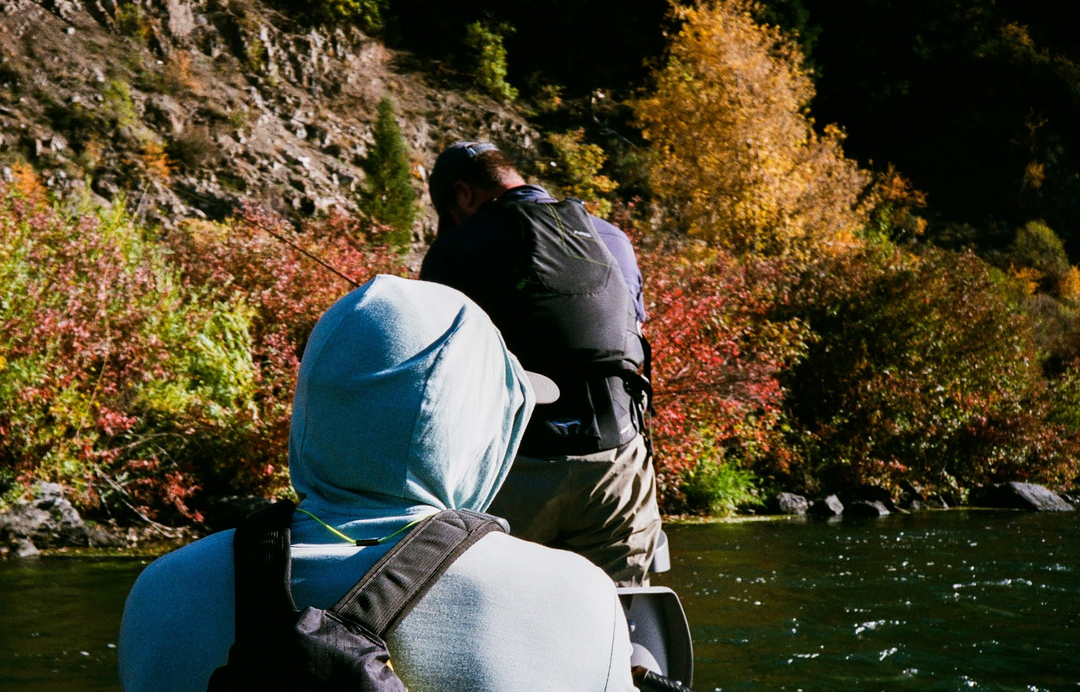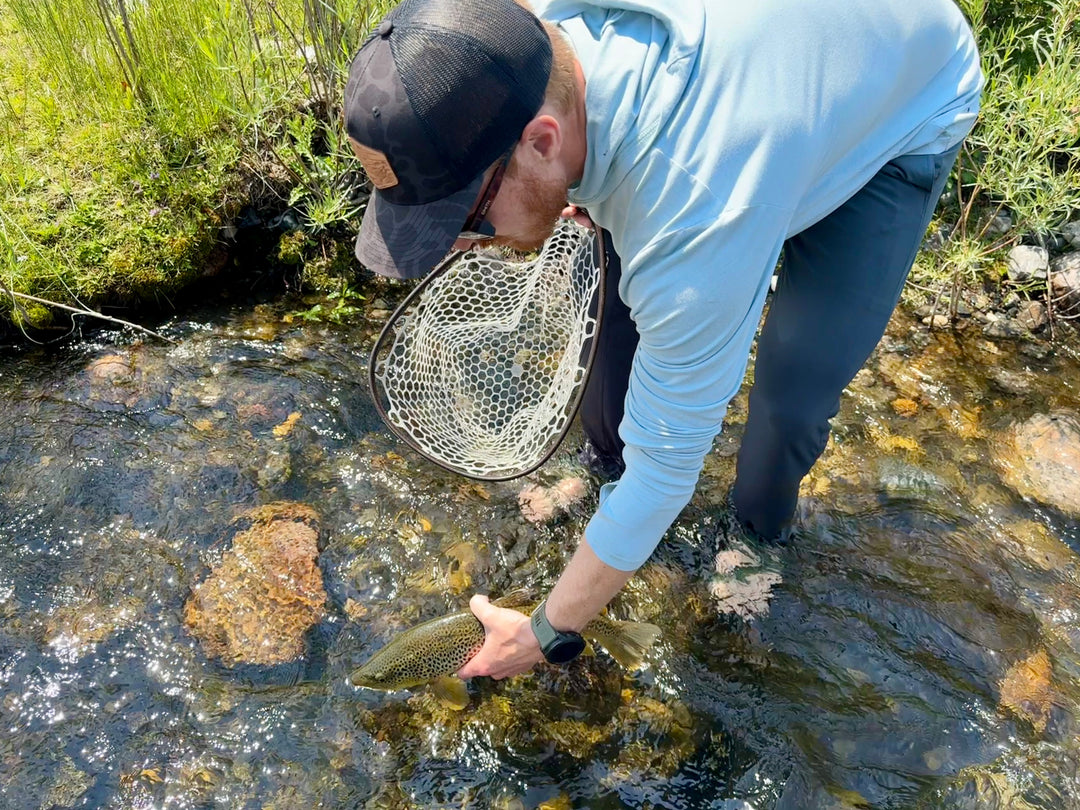What is a Drift Boat?

Picture yourself floating down the Deschutes River at dawn, casting toward promising eddys while your guide expertly navigates the current. The stable platform beneath you responds smoothly to every rapid and turn, giving you the confidence to focus entirely on your fishing. This is the magic of a drift boat – a specialized watercraft that has revolutionized river fishing for generations of fly fishermen.
A drift boat (sometimes called a dory) is a uniquely designed river vessel engineered specifically for fly fishing and navigating flowing water. With its distinctive wide, flat bottom, flared sides, and pointed stern, this boat represents an icon in the fly fishing world.
In this comprehensive guide, we’ll explore everything you need to know about drift boats – from their design features to the best manufacturers in the market. Whether you’re considering your first purchase or simply curious about these remarkable craft, you’ll discover why drift boats have historically been the gold standard for river fly fishing adventures.
Key Takeaways
-
A drift boat is a specialized river boa t with a wide, flat bottom, flared sides, narrow flat bow, and pointed stern designed for navigating rapids and rivers
-
Originally made from wood, modern drift boats use durable materials like fiberglass or aluminum for lower maintenance
-
Drift boats are specifically designed for fly fishing, allowing anglers to access spots on the river inaccessible by foot.
-
These boats typically range from 13-17 feet in length and cost between $15,000-$30,000 depending on materials and features.
-
Professional guides use drift boats the most because of their stability, spacious interiors, and ease of maintenance day in and day out.
Design and Construction Features
The ingenuity of drift boat design, and how it differed from other boats on the time, lies in its specialized construction that works with river currents rather than against them.
Hull Configuration
The wide, flat bottom of a drift boat is a key feature that provides excellent on-the-water stability, making it a favorite among anglers who value a solid, predictable platform for casting. This hull design also helps the boat ride over moderate obstacles and navigate technical water with control. However, while drift boats can operate in relatively shallow conditions, they don’t float quite as high as a lightweight inflatable raft — especially when fully loaded — and may require more water depth to move efficiently without scraping.
The flared sides of a drift boat serve multiple purposes: they offer splash protection in light rapids and increase interior space, allowing anglers more room to cast and stow gear. This design also helps shed water from upstream waves, keeping passengers drier in turbulent water.
It's worth noting that while the wide bottom and flared sides enhance comfort and stability, they also add to the boat’s overall weight. That increased weight can make a drift boat harder to row — particularly in low flows or longer stretches — when compared to a similarly sized inflatable. It's a tradeoff between stability and maneuverability that every angler should consider based on their home waters and fishing style.
Bow and Stern Design
The narrow, flat bow of a drift boat is designed to cut cleanly through water, helping maintain buoyancy while efficiently handling downstream currents. Paired with the pointed stern, this shape contributes to precise control in tight situations — allowing rowers to pivot quickly around rocks or line up the perfect drift through a slot.
This design might seem counterintuitive at first glance, since the rower faces downstream and the boat often moves stern-first. But that pointed stern isn't just for looks — it slices through upstream waves and deflects water outward, helping the boat stay dry and composed in choppy current.
One of the underrated strengths of this hull configuration is its tracking ability. Compared to older jon boat-style hulls that tend to drift unpredictably or spin with the current, drift boats hold a line much more consistently. This makes it easier for the rower to position the boat precisely and for anglers to stay focused on their presentations rather than constantly adjusting their stance or cast.
Rocker and Maneuverability
High-sided models excel in technical water and rapids, providing extra freeboard for safety in challenging conditions. Low-sided designs work best on gentle rivers like the Missouri River, where ease of entry and casting clearance take priority over wave protection. The continuous rocker – the arc from bow to stern along the bottom – allows the boat to spin about its center, making it more responsive for navigating around boulders and through narrow channel than say a jon boat.
Materials and Construction
The evolution of drift boat construction tells a fascinating story of innovation driven by practical needs. Understanding these materials helps you make an informed decision when buying a drift boat.
Fiberglass Construction
Fiberglass is the preferred material for durability and low maintenance requirements. Modern fiberglass drift boats can withstand years of river use with minimal upkeep beyond basic cleaning and occasional gel coat touch-ups.
The construction process for fiberglass boats has been refined over decades, resulting in hulls that are both lighter and stronger than early wooden designs. A ton of engineering has gone into optimizing the layup schedules and resin systems used in modern boats.
Alternative Materials
Aluminum boats are lightweight but tend to be noisy and stick on rocks more than fiberglass models. While they’re easier to repair or fix if damaged (and substantially cheaper), the noise factor can be problematic when trying to approach fish quietly. Many guides have learned this difference the hard way after making the mistake of choosing aluminum for stealth fishing situations.
Wooden drift boats require significant maintenance but offer traditional aesthetics that some anglers find irresistible. A beautiful wooden drift boat is truly a work of art, but be prepared for regular refinishing and repair work. The board and batten construction of vintage wooden boats carries tremendous character, though it demands dedication to preserve.
Historical Innovation
The evolution of the drift boat began in the Pacific Northwest during the early-to-mid 20th century, when builders like Torkel “Tom” Kaarhus helped revolutionize construction by introducing plywood as a primary material. Prior to this, boats were often built using plank-on-frame methods with heavy spruce ribs and cedar planking. Plywood offered a lighter, stronger, and easier-to-shape alternative — a breakthrough that made it possible to build boats with the curved rocker and flared sides ideal for navigating fast, rocky rivers like the McKenzie. This shift not only simplified construction but also laid the foundation for the modern drift boat as we know it today.
Fishing Advantages

Drift boats have earned their reputation as premier river fishing platforms. Built specifically with fly fishermen in mind, they offer excellent comfort, space, and control on the water. While rafts bring unmatched versatility and agility to the table, especially in shallow or technical terrain, drift boats shine with stability, space, and precise tracking.
Expansive Water Access
Drift boats give anglers access to an impressive range of water—from long floats down tailwaters to technical pocket water in boulder-strewn rivers. Their efficient hull design allows you to cover serious ground in a day. While rafts are often better at pushing deeper into side channels or skinny flows, drift boats excel at moving smoothly through the main river, helping anglers fish water that's difficult or time-consuming to walk into.
Large Casting Platform
The wide, flat deck of a drift boat provides a spacious and comfortable casting platform. There’s room to stand confidently and deliver long, accurate casts. Drift boats also tend to offer more space overall, making it easier to move around, organize accessories, or fight fish from different angles. That space does come with a cost, though: more material means more weight. Rafts typically strike a balance here—offering just enough room for anglers and gear while keeping things lighter and easier to row all day long.
Multi-Angler Capacity
With designated seats for two anglers and a rower, drift boats are ideal for guided trips or fishing with friends. Two people can fish comfortably at the same time with minimal interference, and there's ample space for storing fly boxes, lunch, spare rods, and everything else a full day requires. This thoughtful layout keeps the boat efficient and organized, especially over longer floats.
Stability vs. Shallow Water Reach
One of the biggest strengths of a drift boat is its incredible stability. The wide hull sits firmly in the water, allowing anglers to stand and cast without worry—even in rougher water. But this same width, combined with the heavier construction, can limit your options in shallow rivers or small side channels. Where a raft can slip into just a few inches of water and continue floating, a drift boat might get hung up or be forced to stay in deeper flows (sometimes depending on flows they have to wait for days for the flows to increase again). It's a tradeoff: you gain platform stability, but sacrifice some of the reach and maneuverability that inflatable boats own the market on.
Types of Drift Boats
Different river conditions and fishing styles have led to several distinct drift boat designs, each optimized for specific situations.
Regional Specializations
Rogue River dories prioritize carrying capacity and holding current position, designed for the powerful flows and extended trips common on California and Oregon rivers. These boats typically feature higher sides and more storage capacity for multi-day adventures.
McKenzie dories focus on responsiveness and rapid navigation, engineered for the technical water and quick maneuvering required on their namesake Oregon river. The classic McKenzie design remains the most popular choice for general river fishing.
Modern Variations
Montana skiffs combine luxury features with traditional drift boat functionality, often incorporating enhanced storage, more comfortable seating, and premium finishes. These boats cater to anglers who want maximum comfort during their time on the water.
Guide boats are designed for professional outfitters with enhanced durability and features that help guides work efficiently. These often include specialized anchor systems, rod holders, and storage solutions that help guides manage their clients’ gear effectively.
The difference between these styles isn’t just academic – choosing the right type for your local rivers and fishing style can dramatically impact your experience on the water.
Safety Equipment
Life jackets for all passengers represent required safety equipment that no responsible angler should ever ignore (and several sates require you have them - either being worn or just available in the boat). Modern PFDs are comfortable enough to wear all day and won’t interfere with your casting one bit. Keep a well-stocked aid kit accessible for emergency situations – river accidents can happen far from medical help.
How Much Do Drift Boats Cost?
Cost Considerations: New, Used, and Custom Builds
Drift boat prices vary widely depending on condition, materials, and customization. New boats typically range from $15,000–$40,000, with premium models offering advanced features, upgraded finishes, or custom-built designs for specific river systems. Custom builders can tailor every detail to your exact fishing style and local waters—but expect to pay a premium for that level of specialization. The wide price range reflects differences in materials, craftsmanship, and features. Fiberglass boats command premium prices but offer the best durability.
Don’t forget to budget for a proper trailer (if it's not included), which can add $2,000-$5,000 to your total investment. If you don't plan on picking it up from the manufacturer, you'll also need to factor in shipping costs which can be pricey as well.
One tip is most new drift boats will come with a pretty low grade set of oars. When I say low grade I mean HEAVY. They can handle big class whitewater no problem, but most of the time when you're rowing your family and friends around you aren't going on those rivers and heavy oars add up on the shoulders over the course of a long day floating.
For anglers seeking performance without the full cost of a new boat, the used market presents a lot of alternatives. Well-maintained used drift boats generally run between $8,000–$15,000. This can represent excellent value, especially if you find a boat with quality construction and minimal wear. When buying used, pay close attention to the hull and really look it over (lots of people will assure you there are no issues, but not taking the time to confirm can make your life hell when you need to drive to the manufacture and then pay to have it fixed on top of it).
Ultimately, the best investment is the one that matches your needs. Bigger isn't always better. A smaller, lighter drift boat might be a smarter choice if you frequently fish smaller rivers, face tricky launch access, or want something easier to row solo.
FAQ

What size drift boat do I need?
Most drift boats range from 13-17 feet, with larger boats offering more stability and smaller boats providing easier handling. A 16-foot boat represents the sweet spot for most anglers – large enough for stability in rapids but manageable for launching and trailering. Consider your typical group size, the rivers you’ll fish most often, and your vehicle’s towing capacity.
Do I need special training to operate a drift boat?
While not legally required, proper rowing technique and river safety knowledge are essential for safe operation. Many guides offer instruction, and spending a day with an experienced rower can save you years of trial and error. The downstream-facing rowing technique can feels unnatural at first but becomes second nature with practice.
What maintenance does a drift boat require?
Fiberglass boats need minimal maintenance – primarily cleaning and occasional gel coat touch-ups. Wooden boats require regular refinishing and inspection for damage. Aluminum boats need periodic inspection for dents and stress cracks. Regardless of material, inspect your trailer regularly and keep the boat clean to prevent long-term damage.
Proper storage during winter months protects your investment. Store the boat under cover when possible, and consider using a boat cover even in covered storage to prevent dust accumulation and UV damage.
A drift boat represents more than just another piece of fishing gear – it’s a gateway to water that most people may never experience. The combination of access, stability, and fishing-focused design creates opportunities that simply don’t exist with other watercraft.
Whether you’re ready to buy your first drift boat or simply planning future fishing adventures, understanding these specialized craft helps you appreciate why serious river fishermen consider them indispensable. Take the time to research manufacturers, visit dealers, and perhaps book a guided trip to experience drift boat fishing firsthand.
Why Choose An Inflatable Drift Boats for Fly Fishing:

Traditional drift boats offer excellent stability and tracking, but they come with tradeoffs in weight, cost, and accessibility. Inflatable drift boats are changing that equation. On the water, a well-designed inflatable tracks surprisingly well, handles shallow and technical water with ease, and remains stable enough for multiple anglers to fish comfortably — even while standing. Unlike hard boats, inflatables are more forgiving when bouncing off rocks or navigating tight channels.
Inflatable rafts also shine in rougher water. While drift boats can perform well in moderate rapids, they’re more vulnerable to hull damage and less stable in big, pushy water. In contrast, inflatables ride higher, flex with the current, and recover better when things get unpredictable — making them the safer and more capable option when fishing through whitewater stretches.
Cost is another major factor. Premium inflatable drift boats often come in well below the price of fiberglass or aluminum models — even when fully rigged. And with no need for a heavy-duty trailer or large tow vehicle, the overall investment drops considerably.
Storage and transport are also far simpler. Inflatable boats can be deflated, packed into a garage or closet, and loaded into the back of an SUV or pickup — no boat ramp required. For anglers with limited space or those who want to fish more remote stretches of river, this flexibility is a game changer.
While accomplished professional guides often prefer drift boats for their stability, ample space, and predictable tracking—especially when rowing clients through long floats for 150+ days a year —the needs of most recreational anglers are different. For the overwhelming majority of people, rafts offer a better overall fit. They’re more affordable, easier to store and transport, more forgiving, and perform exceptionally well across a wide range of conditions. Whether you're navigating shallow side channels, fishing remote stretches, want to have some multi-day adventures, or simply want a boat that’s lighter and more forgiving to row, a well-designed raft provides the ideal balance of performance, access, and value.
Drift boats will always have their place in fly fishing lore — but inflatables are redefining where and how far you can go.
Check out our other articles we have on drift boats:
-
Inflatable fishing boat vs drift boat
-
Hidden costs of drift boats




